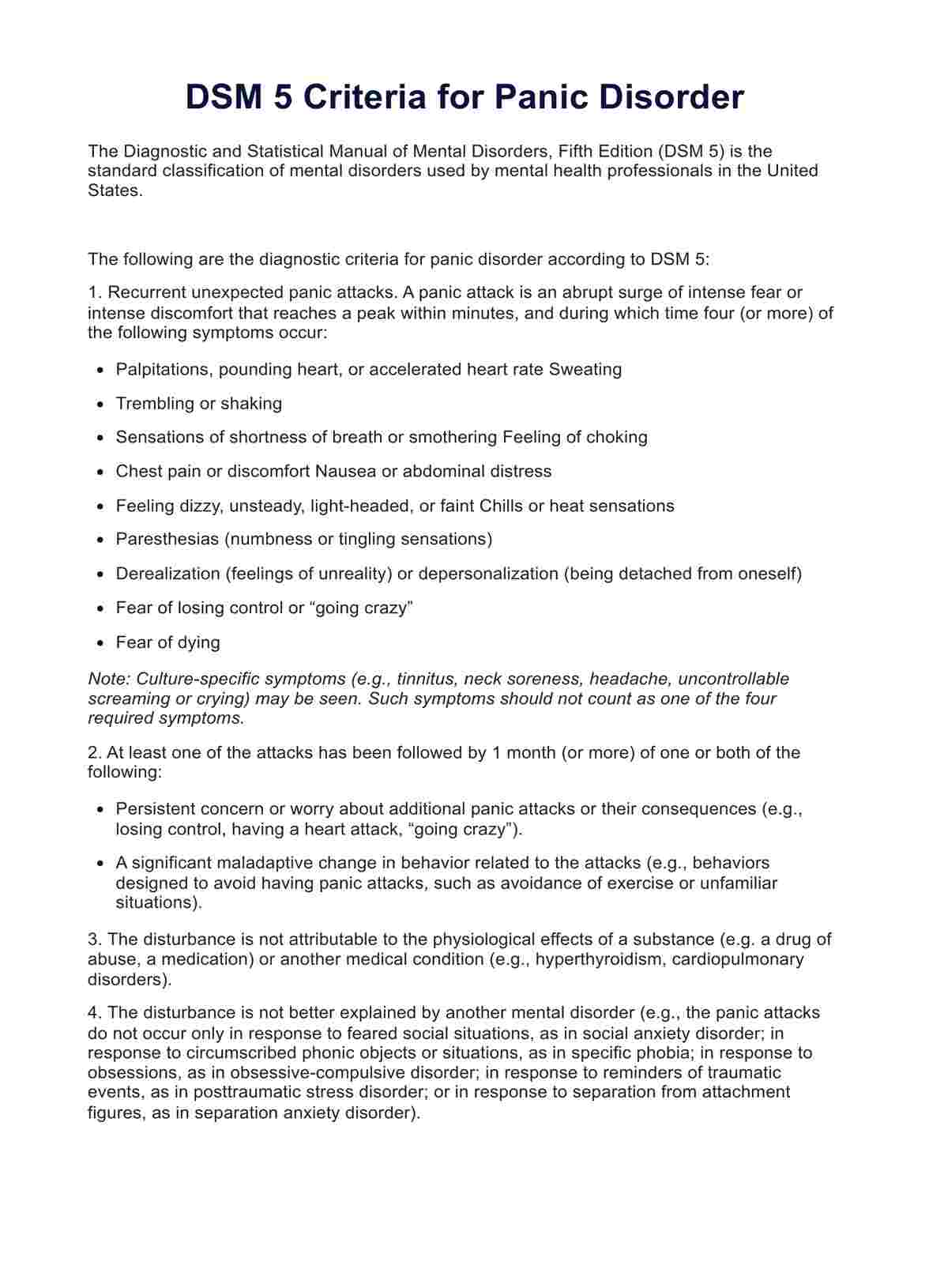Panic disorder is often seen alongside other anxiety disorders, each with distinct characteristics. While panic disorder is marked by sudden and intense episodes of fear or panic attacks, other anxiety disorders, such as generalized anxiety disorder (GAD), involve persistent worry.

DSM 5 Criteria for Panic Disorder
Learn about the DSM 5 Criteria for Panic Disorder and how it is diagnosed. Download a free handout PDF to use in your mental health practice.
DSM 5 Criteria for Panic Disorder Template
Commonly asked questions
Yes, posttraumatic stress disorder (PTSD) and panic disorder can co-occur. PTSD, a mental disorder that can develop after exposure to a traumatic event, may share common symptoms with panic disorder, such as intense fear and anxiety.
Individuals with panic disorder can benefit from learning coping strategies to manage symptoms and reduce panic attack frequency. Techniques like deep breathing, muscle relaxation, and cognitive-behavioral therapy (CBT) can help challenge negative thought patterns. Seeking support from loved ones and stress-reducing activities like exercise or meditation can also help.
EHR and practice management software
Get started for free
*No credit card required
Free
$0/usd
Unlimited clients
Telehealth
1GB of storage
Client portal text
Automated billing and online payments











